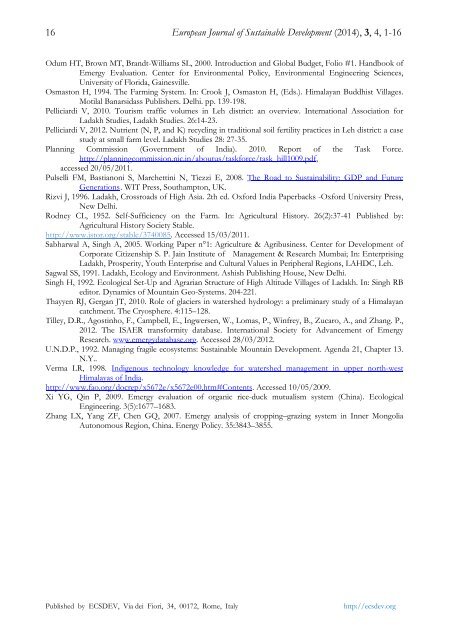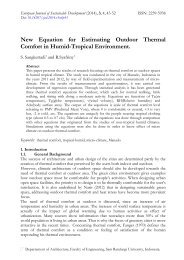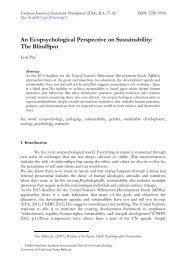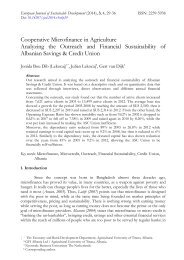Emergy evaluation of a traditional farming system. Case study: Leh District (Ladakh - Indian Trans-Himalaya)
Ladakh traditional farming system has been included on the F.A.O. list of possible “Globally Important Agricultural Heritage Systems”, worthy of being preserved and conserved. The paper describes and assesses cultivation practices in a typical familymanaged farm, located in central Ladakh, analysing how natural resources are exploited, conserved and recycled. Emergy evaluation, an environmental accounting methodology, has been applied to evaluate and compare five staple crop productions: barley, wheat, pea, mustard, and fodder alfalfa. Unit Emergy Values of products (UEV, emergy per unit product, a measure of the environmental production cost) are calculated, taking into account the inputs to production such as water from glaciers, soil fertility, human and animal labour, and more. Results show that the traditional agricultural practices in Ladakh, completely supported by renewable flows, are efficient in the use of local resources. In fact, the UEVs of agroproducts are similar to those of analogous products of conventional agriculture (e.g. 5.27E+05 and 6.64E+05 semj/J for barley and wheat in Ladakh, respectively; 7.37E+05 semj/J for corn in USA), though the inputs of Ladakh agriculture are strongly limited in type and quantity. At the same time, local farmers can create, maintain and rebuild soil functions whose UEV is 1.62E+07 semj/J. Keywords: Ladakh, agrosystem, emergy, environment, sustainability
Ladakh traditional farming system has been included on the F.A.O. list of possible “Globally Important Agricultural Heritage Systems”, worthy of being preserved and
conserved. The paper describes and assesses cultivation practices in a typical familymanaged farm, located in central Ladakh, analysing how natural resources are exploited, conserved and recycled. Emergy evaluation, an environmental accounting methodology, has been applied to evaluate and compare five staple crop productions: barley, wheat, pea, mustard, and fodder alfalfa. Unit Emergy Values of products (UEV, emergy per unit product, a measure of the environmental production cost) are calculated, taking into account the inputs to production such as water from glaciers, soil fertility, human and
animal labour, and more. Results show that the traditional agricultural practices in Ladakh,
completely supported by renewable flows, are efficient in the use of local resources. In fact, the UEVs of agroproducts are similar to those of analogous products of conventional agriculture (e.g. 5.27E+05 and 6.64E+05 semj/J for barley and wheat in Ladakh, respectively; 7.37E+05 semj/J for corn in USA), though the inputs of Ladakh agriculture are strongly limited in type and quantity. At the same time, local farmers can create, maintain and rebuild soil functions whose UEV is 1.62E+07 semj/J.
Keywords: Ladakh, agrosystem, emergy, environment, sustainability
Create successful ePaper yourself
Turn your PDF publications into a flip-book with our unique Google optimized e-Paper software.
16<br />
European Journal <strong>of</strong> Sustainable Development (2014), 3, 4, 1-16<br />
Odum<br />
HT, Brown MT, Brandt-Williams SL, 2000. Introduction and Global Budget, Folio #1. Handbook <strong>of</strong><br />
<strong>Emergy</strong> Evaluation. Center for<br />
Environmental Policy, Environmental Engineering Sciences,<br />
University <strong>of</strong> Florida, Gainesville.<br />
Osmaston H, 1994. The<br />
Farming System. In: Crook J, Osmaston H, (Eds.). <strong>Himalaya</strong>n Buddhist Villages.<br />
Motilal Banarsidass Publishers. Delhi. pp. 139-198.<br />
Pelliciardi V, 2010. Tourism traffic volumes in <strong>Leh</strong> district: an overview. International Association for<br />
<strong>Ladakh</strong> Studies, <strong>Ladakh</strong> Studies. 26:14-23.<br />
Pelliciardi V, 2012. Nutrient (N, P, and K) recycling in <strong>traditional</strong> soil fertility practices in <strong>Leh</strong> district: a case<br />
<strong>study</strong> at small farm level. <strong>Ladakh</strong> Studies 28: 27-35.<br />
Planning<br />
Commission<br />
(Government <strong>of</strong> India). 2010. Report <strong>of</strong> the Task Force.<br />
http://planningcommission.nic.in/aboutus/taskforce/task_hill1009.pdf,<br />
accessed 20/05/2011.<br />
Pulselli FM, Bastianoni S, Marchettini N, Tiezzi E, 2008. The Road to Sustainability: GDP and<br />
Future<br />
Generations. WIT Press, Southampton, UK.<br />
Rizvi J, 1996. <strong>Ladakh</strong>, Crossroads <strong>of</strong> High Asia. 2th ed. Oxford India Paperbacks<br />
-Oxford University Press,<br />
New Delhi.<br />
Rodney CL, 1952. Self-Sufficiency on the Farm. In: Agricultural History. 26(2):37-41 Published by:<br />
Agricultural History Society Stable.<br />
http:/ //www.jstor.org/stable/3740085. Accessed 15/03/2011.<br />
Sabharwal A, Singh A, 2005. Working Paper n°1: Agriculture<br />
& Agribusiness. Center for Development <strong>of</strong><br />
Corporate Citizenship S. P. Jain Institute <strong>of</strong> Management & Research<br />
Mumbai; In: Enterprising<br />
<strong>Ladakh</strong>, Prosperity, Youth Enterprise and Cultural Values in Peripheral Regions, LAHDC,<br />
<strong>Leh</strong>.<br />
Sagwal SS, 1991. <strong>Ladakh</strong>, Ecology and Environment. Ashish Publishing House, New Delhi.<br />
Singh<br />
H, 1992. Ecological Set-Up and Agrarian Structure <strong>of</strong> High Altitude Villages <strong>of</strong> <strong>Ladakh</strong>. In: Singh RB<br />
editor. Dynamics <strong>of</strong> Mountain Geo-Systems. 204-221.<br />
Thayyen RJ, Gergan JT,<br />
2010. Role <strong>of</strong> glaciers in watershed hydrology: a preliminary <strong>study</strong> <strong>of</strong> a <strong>Himalaya</strong>n<br />
catchment. The Cryosphere. 4:115–128.<br />
Tilley, D.R., Agostinho, F., Campbell, E., Ingwersen, W., Lomas, P., Winfrey, B., Zucaro, A., and Zhang. P.,<br />
2012. The ISAER transformity database. International Society for Advancement <strong>of</strong> <strong>Emergy</strong><br />
Research. www.emergydatabase.org. Accessed 28/03/2012.<br />
U.N.D.P., 1992. Managing fragile eco<strong>system</strong>s: Sustainable Mountain Development. Agenda 21, Chapter 13.<br />
N.Y..<br />
Verma LR, 1998. Indigenous technology<br />
knowledge for watershed management in upper north-west<br />
<strong>Himalaya</strong>s <strong>of</strong> India.<br />
http:/ //www.fao.org/docrep/x5672e/x5672e00.htm#Contents. Accessed 10/05/2009.<br />
Xi YG, Qin P, 2009. <strong>Emergy</strong> <strong>evaluation</strong><br />
<strong>of</strong> organic rice-duck mutualism <strong>system</strong> (China). Ecological<br />
Engineering. 3(5):1677–1683.<br />
Zhang LX, Yang ZF, Chen GQ, 2007. <strong>Emergy</strong> analysis <strong>of</strong> cropping–grazing <strong>system</strong> in Inner Mongolia<br />
Autonomous Region, China. Energy Policy. 35:3843–3855.<br />
Published by ECSDEV, Via dei Fiori, 34, 00172, Rome, Italy<br />
http://ecsdev.org











